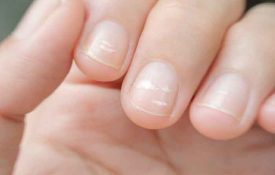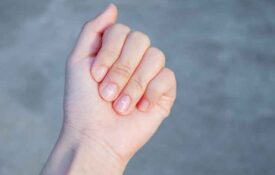
You think you know everything about the nail system, don’t you? You studied it at length, in breadth and across during your biology classes. Yet this organ has more secrets than you think.
The nail or rather “rognure” (its appellation of origin) had powers in the Middle Ages
At that time, women wore their suitor’s nail tips in necklaces, in a pendant to trigger their love and force them to marry. Funny way to do it… Nails were also used to create love philtres and other therapeutic potions.
Also, it happened that the nails were buried in order to recover health. We can say that at the time, we did not lack imagination!
Melanoma can develop under the nail
It is not to be put aside as Bob Marley did… Melanoma of the nail is a great simulator and sometimes takes the mask of other diseases or infection.
Most often, it begins with the appearance of a brown or black line that becomes irregular. This is only 4% of cancers but this pathology should not be underestimated.
White spots on the nail plate are not due to calcium deposition
In the past, these small white spots were called unguium flora. After several medical debates, it was in the nineteenth century that doctors agreed on the issue.
Naturally, the nail is transparent, and these small white spots can appear when the cells retain their nucleus. This is due to an anomaly of keratinization.
Calcium doesn’t make nails stronger
Recognize that you thought the opposite… Several elements are used in the composition of nails: lipids, sulfur, iron, zinc, etc. The calcium content is lower. What makes nails strong is their hydration rate and richness in sulfur proteins.
Nail art is not new
It is often said that we did not invent anything in our time, and that is true. Our ancestors were more creative than we imagine! In the thirteenth century, Inca men and women drew animals on their nails.
This, in order to have with them sacred symbols such as the condor, sacred bird of Indian mythology.
The United States has played a leading role in the evolution of manicure
It was on the American territory that at the end of the nineteenth century, the first nail salons opened. It was also in the United States that the nail clipper was imagined, which put an end to nail knives.
It was Eugène Heim and Oelestin Matz who filed the nail clipper patent.
Varnish is not harmful to nails
This statement is to be taken with all its measure. Of course, a misused varnish is bad for nails. Well used, it beautifies the hands, protects the nails while limiting their dehydration. To do well, it should not be worn more than 5 days in a row.
The majority of complications related to nails come from inappropriate use and gestures
Nails do not have pathologies innately. They necessarily result from the use of a bad product (not suitable or of poor quality), or from the misuse of an instrument (repeated use of a sander for example).
These traumas obviously alter the quality and health of the nails. Sometimes surgery may be necessary.
We recommend that you use the adequate manicure and pedicure set to take care of your nails before applying any kind of decoration.
Read also: Castor oil for nails: benefits, application


